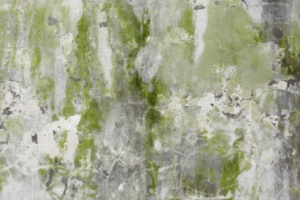 Dozens of labor, faith and community leaders and members gathered on the steps of New York City hall to announce the creation of Back Home, “Back to Work,” a new project to get Hurricane Sandy-affected residents back into their homes by providing safe, fast and effective mold assessment and remediation, according to a press statement issued by the coalition.
Dozens of labor, faith and community leaders and members gathered on the steps of New York City hall to announce the creation of Back Home, “Back to Work,” a new project to get Hurricane Sandy-affected residents back into their homes by providing safe, fast and effective mold assessment and remediation, according to a press statement issued by the coalition.
The new initiative comes on the heels of a long-awaited U.S. House of Representatives vote to approve $50+ billion in federal Sandy relief funds.
This precedent-setting and cost-effective project, designed by indoor air quality experts and community partners with input from professional environmental contractors and workers, would make use of federal and state Sandy relief funds to put New Yorkers back in their homes and businesses, and back to work.
The joint union-community partnership is ready to immediately deploy more than 600 skilled union workers, and train hundreds more community residents to eliminate mold in areas still recovering and rebuilding after Hurricane Sandy.
“Thousands of people are still looking to return home or re-open their business with a clean start three months after the storm,” said Edison Severino, business manager of Laborers Local 78. “We want to be part of the solution with a comprehensive mold remediation program that creates jobs, provides immediate relief to hard-hit communities, and saves money by making sure the work is done right the first time.”
Mold continues to be a widespread problem in homes and small businesses impacted by Superstorm Sandy. Thousands of residents remain unable to return home because of the health and safety risks of mold in their homes. A recent study of the Rockaways revealed that 37% of residents surveyed still have mold in their homes.
"I have not been able to return home to Oakwood Beach, Staten Island since Hurricane Sandy because my house is infested with mold and completely uninhabitable,” said Cynthia Scarcella, Make the Road New York community leader and resident of Oakwood Beach, Staten Island. She continued, “Contractors can be expensive. I've tried calling Rapid Repairs and have relied on the help of volunteers to help me clean, but the mold keeps coming back. I would welcome the opportunity for reliable, affordable assistance through a quality mold remediation program."
Mold is considered a biological hazard and poses serious health risks, particularly for people with compromised immune systems, children, seniors, and the poor, who are the most likely to continue living in mold-infested buildings. Irritation, allergies, and poisoning and infectious disease are some of the health problems caused by exposure to mold.
“We lived for almost three months in the dark and cold waiting for the city’s Rapid Repair program to help us turn on our heat and electricity,” said Jorge Gonzalo, an army veteran and resident of Far Rockaway. “Now our basement ceiling is infested with mold, I’m worried about our health, and I don’t have the money to fix it.”
Speakers raised concerns about proper training to permanently eliminate mold. Currently, dangerous work is being carried out by volunteers and workers with little training or protections. Some residents have experienced mold coming back after being improperly cleaned.
“The risks of using untrained workers or volunteers to perform mold remediation can be grave for residents, business owners, and workers,” said Jorge Roldan of the Mason Tenders District Council Training Fund. “New Yorkers need properly trained environmental workers to do this job safely and correctly the first time.”
Several speakers emphasized that New York City has not done enough to combat the harmful effects of mold and speed recovery post-Sandy. A recent study (http://bit.ly/QCUAMold)by Queens Congregations United for Action highlighted how the Bloomberg Administration’s decisions to not include mold remediation in the Rapid Repair program and not apply for FEMA funds for mold remediation have forced victims of Sandy to continue living in unhealthy conditions.
“My congregation was flooded badly by Hurricane Sandy, which left behind an infestation of mold,” said Minister Kenneth Brown of Mount Carmel Baptist Church in Rockaway Beach. “Estimates are that it will cost tens of thousands of dollars to fix. Where will we get that kind of money? We minister to poor and working families in this community who are also struggling to deal with the mold problem and rebuild their lives.”
Community members suffering from mold growth after Hurricane Sandy spoke out about the need for financial support to make mold remediation affordable for working families impacted by Sandy.
Groups, including community members, indoor air quality and microbial experts, mold remediation contractors, elected officials including City Council Member Letitia James, and members of the Alliance for a Just Rebuilding, including ALIGN, Laborers Local 78, Make the Road New York, New York Committee for Occupational Safety and Health (NYCOSH), New York Communities for Change, Mutual Housing Association of NY, Queens Congregations United for Action and VOCAL-NY, called on Mayor Bloomberg to allocate Sandy relief funds for this initiative to take it to scale.
“The health risks and costs of continuing to do nothing about the mold crisis are far too high,” said Matt Ryan, Executive Director of ALIGN. “Mayor Bloomberg should prioritize and immediately seek dedicated federal and state funding for this comprehensive mold remediation program.”
Speakers provided additional details about how “Back Home, Back to Work” is ready to work in partnership with city and state entities to handle mold remediation in a systematic and cost-effective way that goes block-by-block rather than one house or one business at a time. The project scope would cover assessment, coordination with qualified contractors, remediation, staffing skilled union members, health and safety training, and creating ladders of opportunity for hundreds of non-union workers, prioritizing the hiring and placement of local workers from Sandy-impacted communities and other vulnerable local groups.
Project partners estimate that thousands of homes and businesses could be quickly and expertly remediated through “Back Home, Back to Work.” The project is up-and-running, with a demonstration project on effective mold remediation planned in the home of a community member still recovering from Sandy’s devastation.


